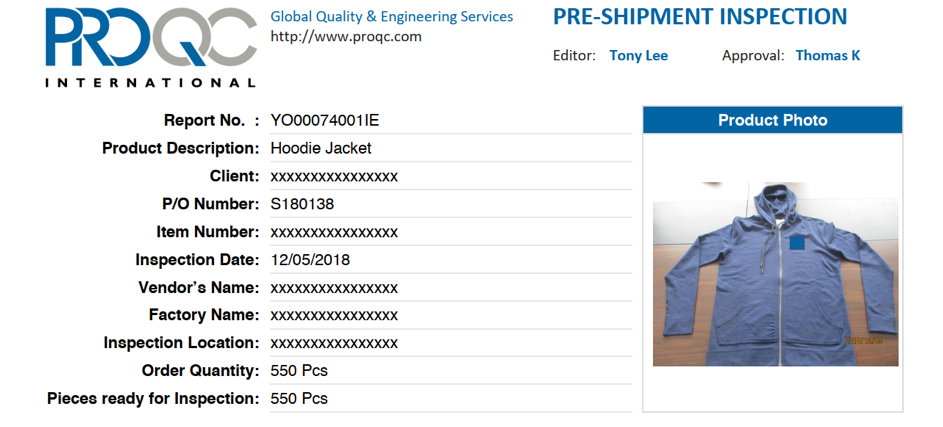
The global textile trade is a multi-billion-dollar industry, with fabrics and garments crisscrossing oceans to meet the demands of an ever-growing consumer base. However, this massive exchange is not without its challenges. A significant concern is the occurrence of defects in textile products. These defects, ranging from color mismatches to fabric inconsistencies, can severely impact a brand’s reputation and sales. In an era where customers are increasingly discerning and vocal about product quality, even minor flaws can lead to substantial repercussions for manufacturers and retailers.
The solution lies in Textile Pre-Shipment Inspection, a critical quality control tool that, despite its widespread implementation in the industry, is still underestimated by some brands. This inspection process serves as a final checkpoint, ensuring that textile products meet the required standards and specifications before being dispatched to their destinations. It’s a process that not only safeguards the interests of consumers but also upholds the reputation of brands and manufacturers.
This article aims to delve into the depths of textile inspection, drawing upon our extensive experience in the field. We will explore the common quality defects observed in textiles, the methods employed to detect and address these issues, and we share a comprehensive and detailed checklist for textile pre-shipment inspection, developed from our 40 years of experience in quality control.
Textile manufacturing is a sophisticated process that blends art and science. Despite technological advancements, the occurrence of defects remains an inherent challenge. Identifying and understanding these defects is crucial in implementing effective quality control measures. Here, we outline the most commonly encountered defects in textile inspection:
These include any visual imperfections that affect the aesthetic appeal of the textile. Common examples are:
Key aspects to inspect here are:
Critical for maintaining aesthetic consistency:
Directly related to the material’s quality and durability:
Ensuring accurate information and compliance:
Ensuring the correct logo and correct placement:
Crucial for consumer information and legal compliance:
Ensuring all parts of the textile product meet standards:
Ensuring the textile product fits as intended:
Eliminating any potential hazards:
The general craftsmanship of the textile product:
During a textile inspection, these aspects are scrutinized against the specified quality criteria. The inspection process involves a systematic examination of the textiles, using both visual inspection and physical testing where necessary. The aim is to identify any deviations from the agreed-upon standards and specifications, ensuring that the final product delivered to the customer meets their expectations in terms of quality, safety, and functionality.
For fabric inspection, ASTM D5430 – Standard Test Methods for Visually Inspecting and Grading Fabrics is commonly used and is often associated with the "4-Point System" for fabric inspection. It outlines methods for assessing fabric quality and identifying any imperfections or irregularities that may affect the fabric’s performance or suitability for its intended application.
Dimensional stability refers to a fabric’s ability to maintain its original dimensions after washing and drying. Textile inspectors use standards like ISO 5077 and ASTM D4970 to assess shrinkage or elongation of the fabric after laundering.
Colorfastness is a crucial quality aspect, determining whether a fabric’s color will bleed or fade under various conditions. Tests are conducted for colorfastness to washing (ISO 105-C06), rubbing (ISO 105-X12), and light exposure (ISO 105-B02).
The strength of the textile is evaluated to ensure durability. Tensile strength tests (ISO 13934-1) measure the force required to break the fabric, while tear strength tests (ISO 13937-2) assess the force needed to propagate an existing tear.
For certain textiles, especially those used in home furnishings and children’s wear, flammability tests are crucial. Standards like the U.S. Flammable Fabrics Act (FFA) set requirements for fabric flammability.
Textiles are tested for harmful substances to ensure they meet health and safety standards. Tests include checking for pH value (ISO 3071), presence of azo dyes (EN 14362-1), and formaldehyde content (ISO 14184-1).
Fiber composition is verified using methods like the burn test or chemical analysis to ensure the product matches its label. This is important for consumer trust and regulatory compliance.
Pilling is the formation of small, fuzzy balls on the surface of the fabric. Resistance to pilling is assessed using tests like the Martindale method (ISO 12945-2).
Seam strength is vital for garment durability. Tests like ASTM D1683 measure the strength of sewn seams, while seam slippage tests (ASTM D4034) assess the integrity of the fabric at the seam.
For fabrics that are meant to be water-resistant, tests like the Spray Test (AATCC 22) or Hydrostatic Pressure Test (AATCC 127) are conducted.
Finally, textile inspections ensure compliance with international standards such as ISO, ASTM, and AATCC, as well as regional regulations like REACH in Europe and CPSIA in the USA.
A textile pre-shipment inspection is a quality control process conducted on textile products before they are shipped to the customer. This inspection is crucial in the textile industry to ensure that all products meet specific standards and requirements. It involves checking the material’s quality, verifying color and pattern accuracy, ensuring the correct sizing, and examining the stitching quality. The process also includes testing the fabric’s strength and durability, confirming the proper labeling and packaging, and ensuring that the products comply with both the importing and exporting countries’ regulatory standards. This inspection helps to identify any defects or non-conformities in the batch, allowing for corrections before the products reach the customer, thereby safeguarding the buyer’s reputation and minimizing the risk of costly returns or complaints.
As an example, we will present you below in the article a real inspection report of a service we conducted for a hoodie jacket.

When it comes to ensuring the quality of textile products before they are shipped, it is essential to understand two key concepts: sampling size and AQL (Acceptable Quality Level).
Let’s start by breaking down what these terms mean and how they apply in a real-world scenario.
In our hoodie jacket pre-shipment inspection example, the total number of pieces produced is 550 Hoodie Jackets. The first step is to determine the number of jackets to inspect, which is where the sampling size comes into play. The sampling size isn’t just a random selection of units; it’s a carefully calculated number based on specific criteria, ensuring a representative and efficient inspection process.
For our Hoodie Jacket inspection, three types of checks are recommended:
Now, let’s talk about AQL or Acceptable Quality Level. It is the maximum number of defective units that can be considered acceptable during the random sampling of an inspection. In other words, it is the worst tolerable process average when a continuous series of batches is inspected. For each type of check (workmanship, special function, and others), there’s a corresponding AQL that dictates the number of defects that can be tolerated.
The selection of the AQL level depends on the importance of the product and the risks associated with product failure. For example, a higher AQL (meaning more defects are tolerated) might be acceptable for a less critical aspect like packaging, whereas a lower AQL (fewer defects tolerated) is essential for key functional aspects of the Hoodie Jacket.
For our hoodie jacket inspection, our team selected the following AQL:
Let’s break them down:
To learn more about AQL, read our article dedicated article 5 Things You Probably Didn’t Know About AQL.
On our textile pre-shipment inspection reports, we present in a table the sampling size and AQL that was selected at the beginning with the breakdown of the defects we identified by the type of check and by the defect category (minor defects, major defects, or critical defects).
Here is how this table looks in the report of our example on Hoodie Jacket inspection:

At Pro QC, our textile pre-shipment inspection checklist covers the following criteria:
In the section below, we present the details of each criterion, including pictures, based on our example of hoodie jacket inspection.
The first step in any pre-shipment inspection is the verification of the quantity. This evaluation checks if the actual quantity ready to be shipped to the client matches the quantity indicated in the purchase order (PO). The key aspects that need to be assessed during this stage include:
For our hoodie jacket inspection example, we have reported the quantity as per the following in our inspection report.

This stage is essential not only for upholding the brand’s image but also for ensuring that the packaging is robust and suitable for transit, minimizing the risk of damage. It includes:
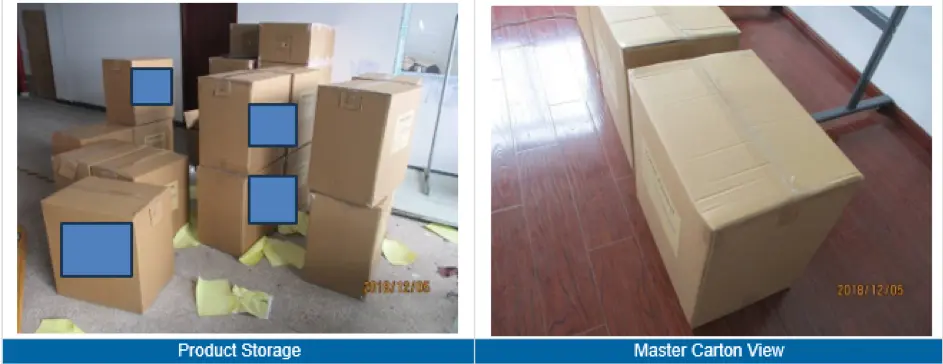
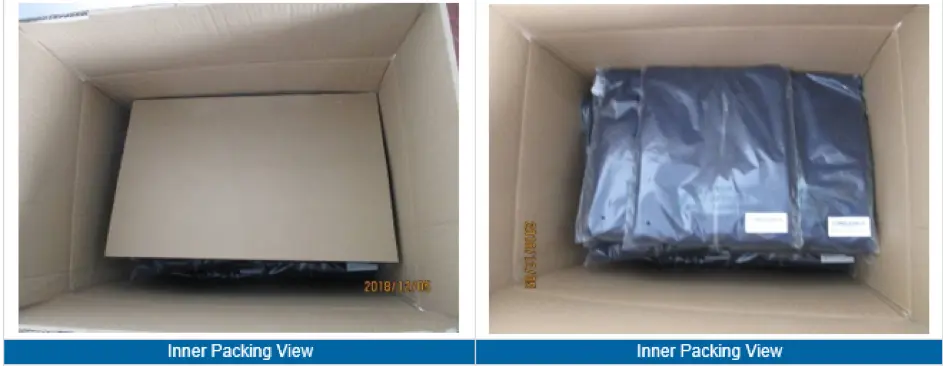
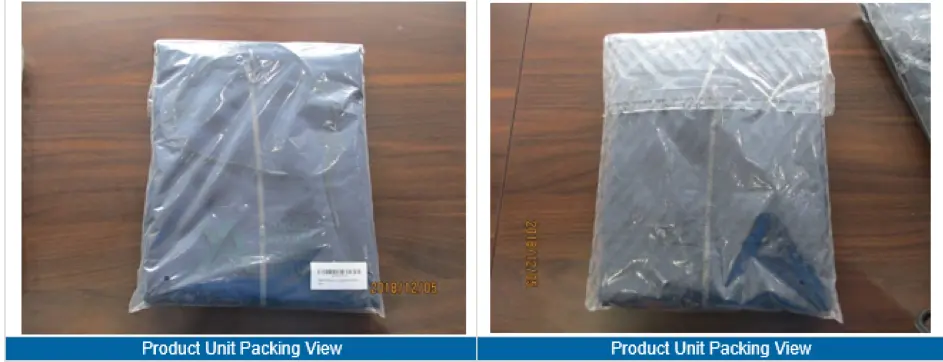
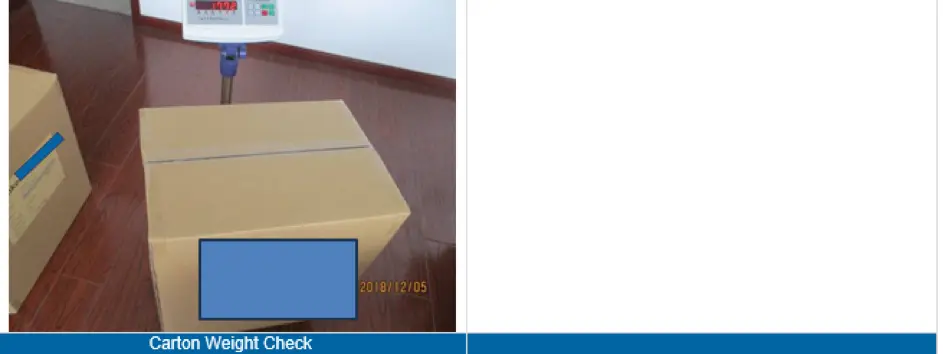
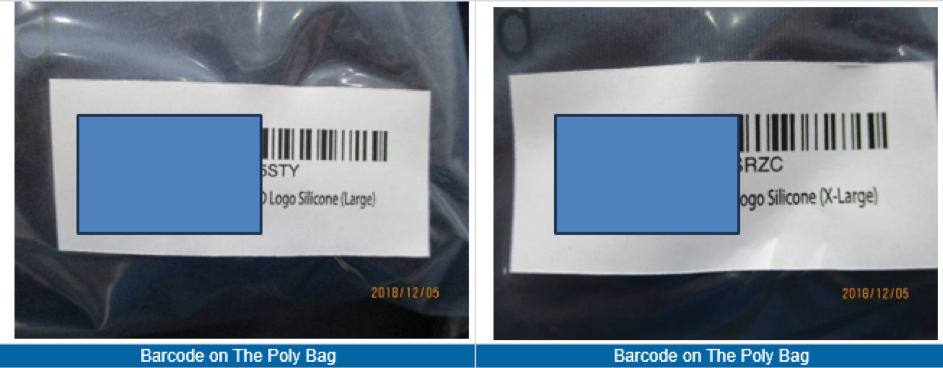
In this stage, we verify if the style and construction of the textile product match the approval sample and the client’s technical file.
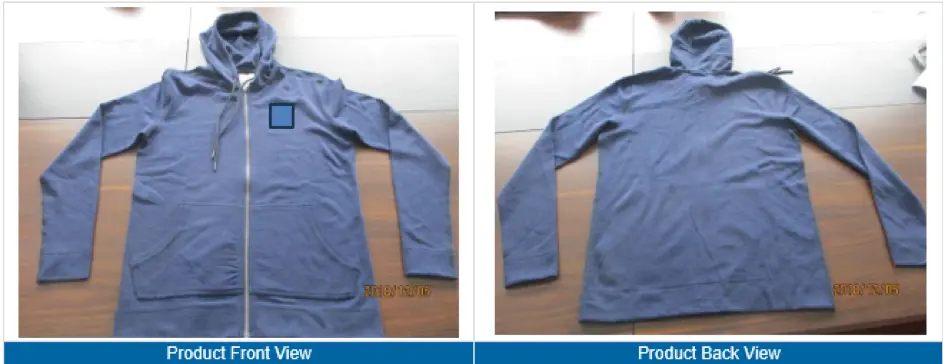
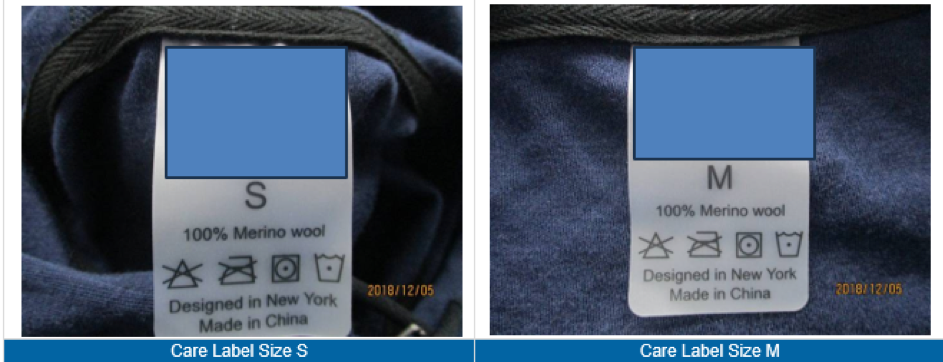
During the inspection, precise measurements are a critical aspect to evaluate. This involves verifying several key dimensions to ensure consistency and adherence to design specifications (within tolerances or out of tolerances).
It typically includes the length of the jacket from shoulder to hem, ensuring it matches the intended design length. The chest width, measured across the garment under the arms, is checked for size accuracy. Sleeve length, from the shoulder seam to the cuff, is measured to ensure comfort and fit. The waistband and cuff measurements are also important, especially for ensuring a snug fit and maintaining the garment’s shape. Lastly, the placement and size of pockets, zippers, and any decorative elements are measured to guarantee they align with the design specifications. 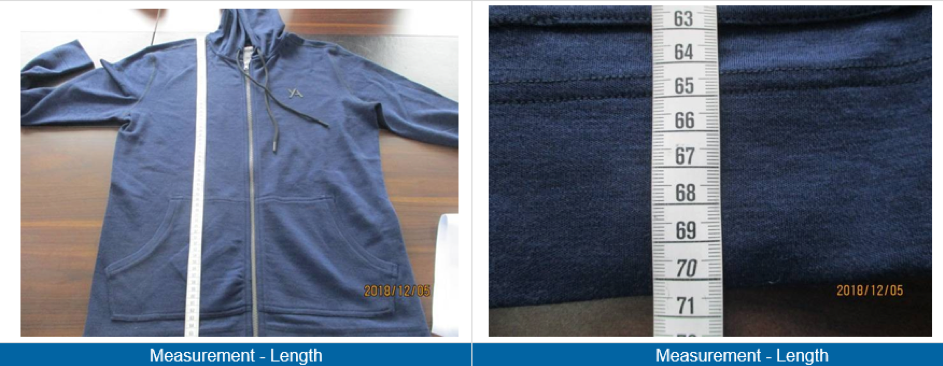
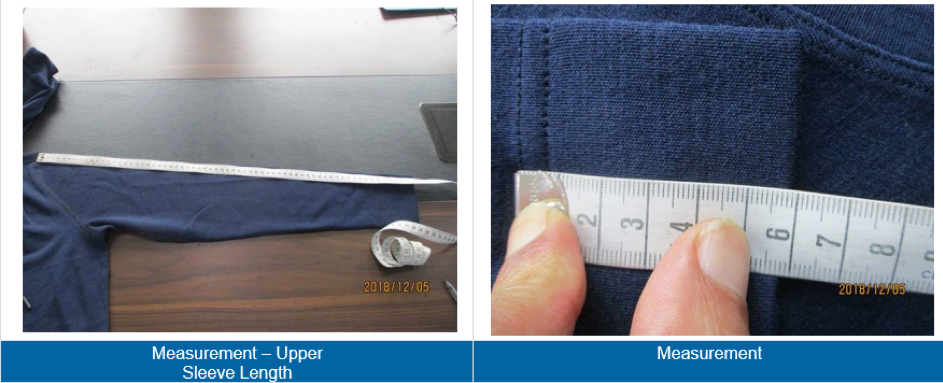
In the textile pre-shipment inspection report, the results of the measurement data check are presented in a table as follows:
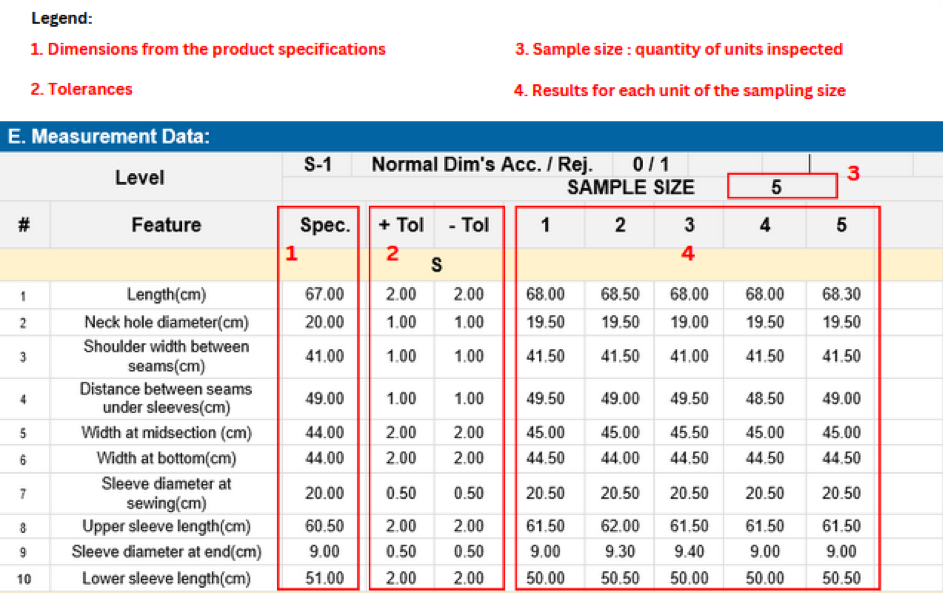
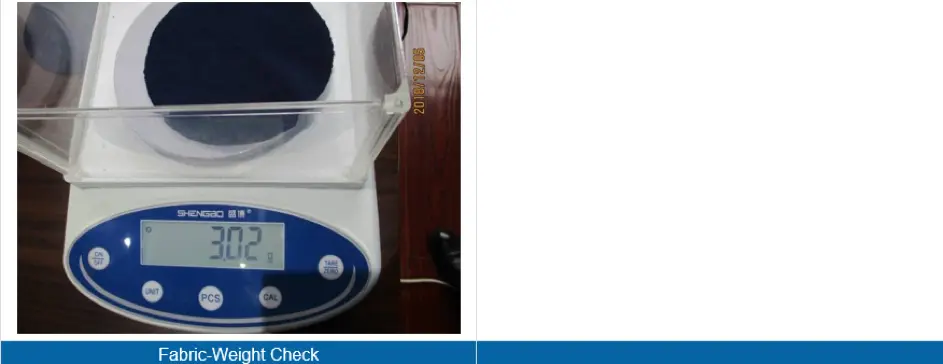
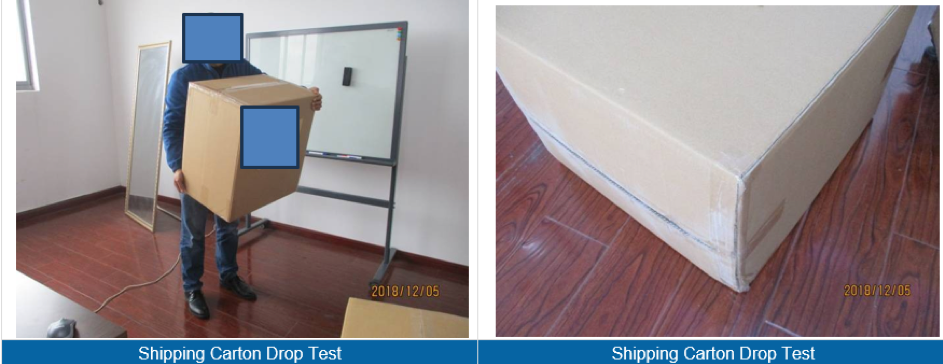
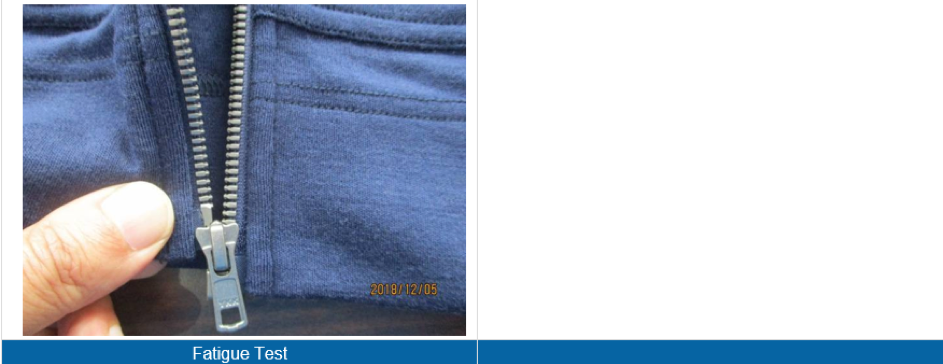
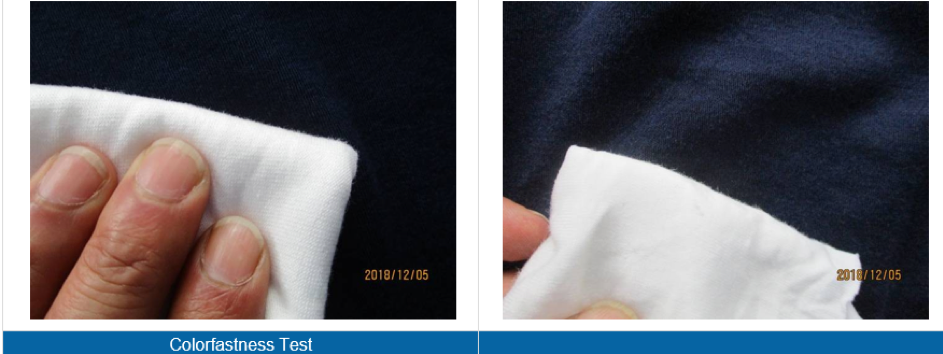
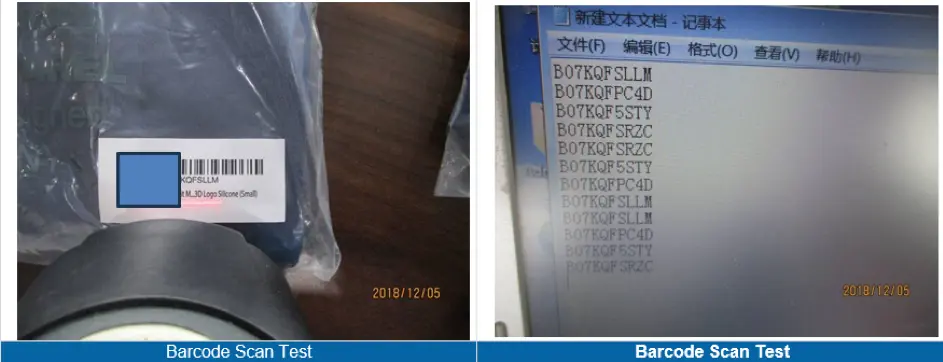
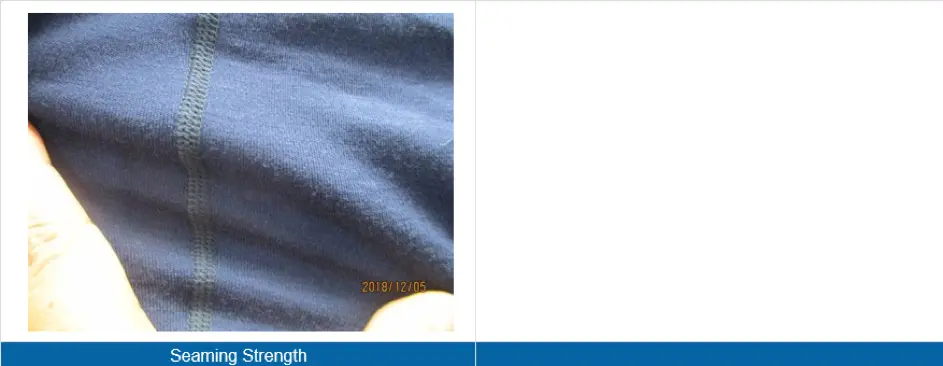
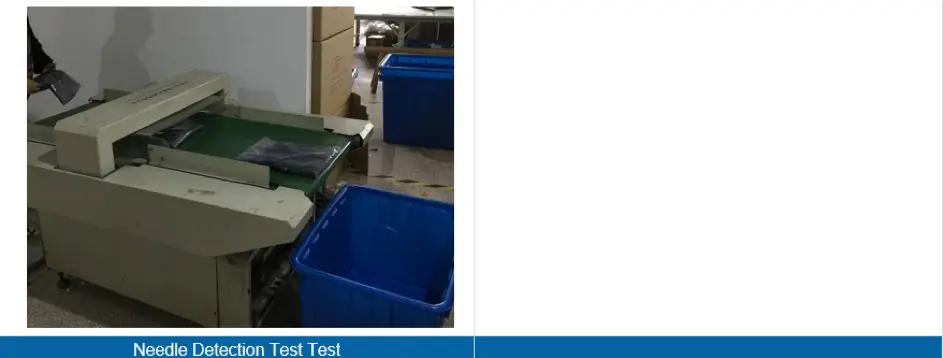
Here are examples of quality defects that we identified during the hoodie jacket inspection:
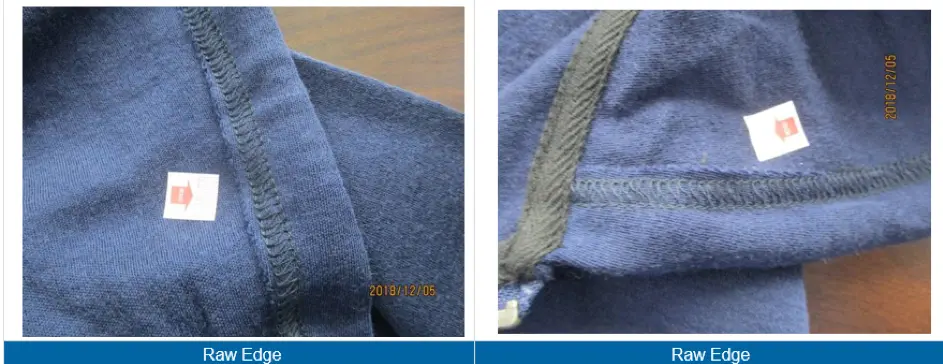
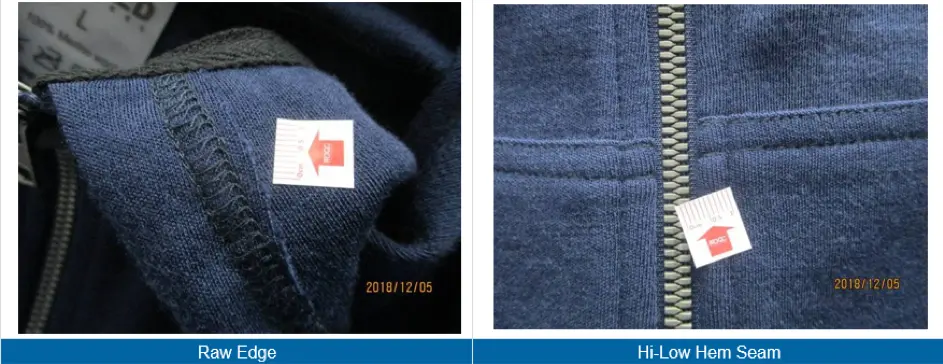
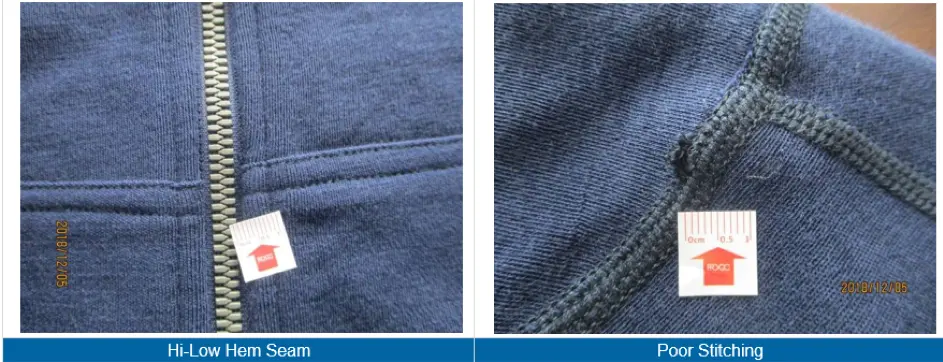
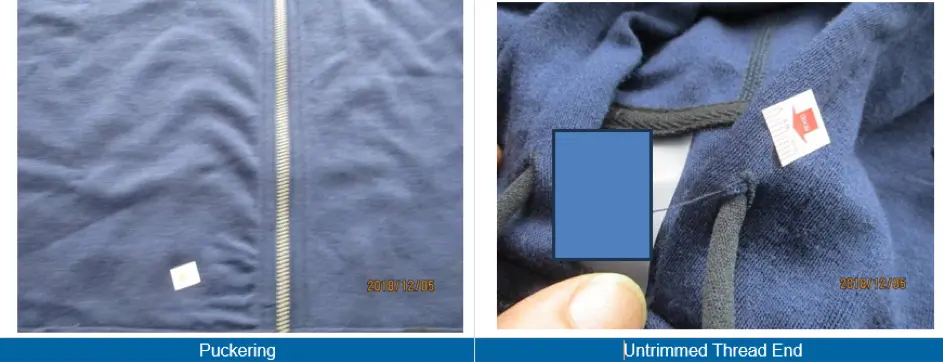
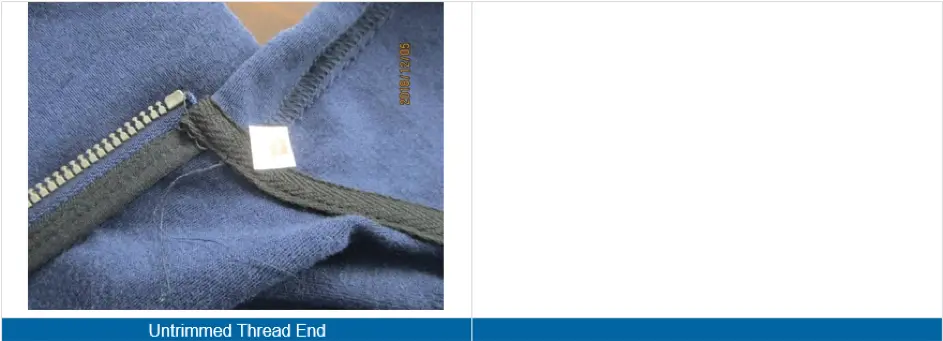
Those visual defects are categorized by defect category in a table within the inspection report as follows:
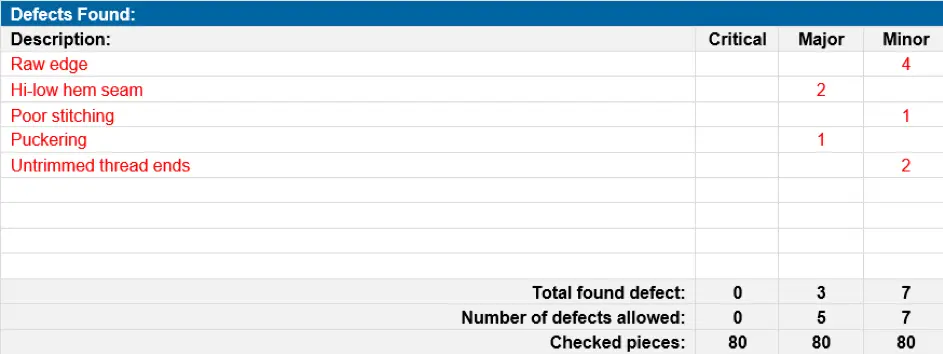
Here, the number of defects is within the acceptable limit (the allowed number of defects), so it passes the check.
Download the complete textile inspection report in PDF format for free here: Sample Report
In conclusion, the role of textile pre-shipment inspection in the global textile industry cannot be overstated. As this article has highlighted, the presence of defects in textile products poses a significant risk to both brand reputation and consumer satisfaction. By implementing inspections, brands can mitigate these risks, ensuring that only the highest quality products reach the market.
Our exploration of common quality defects, coupled with our detailed inspection checklist, offers valuable insights and practical tools for anyone involved in the textile trade. In a sector as vast and interconnected as the textile industry, textile quality control checks stand as a crucial pillar, supporting the seamless flow of quality products across global markets.
Pro QC is a global quality assurance company. Since 1984, we have provided quality control solutions for textile and garment manufacturers and buyers such as textile inspections, factory audits, social compliance audits and supplier management. We support our clients in over 88 countries by verifying supplier reliability, improving factory performance, and ensuring product quality. Contact us for any questions, or to request a quote.